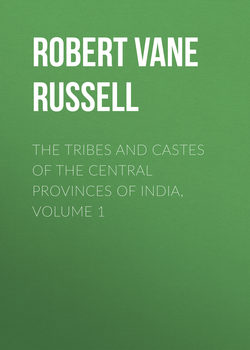Читать книгу The Tribes and Castes of the Central Provinces of India, Volume 1 - Robert Vane Russell - Страница 11
Part I.
Introductory Essay on Caste
Introductory Essay on Caste
8. The four traditional castes
ОглавлениеThe well-known traditional theory of caste is that the Aryans were divided from the beginning of time into four castes: Brāhmans or priests, Kshatriyas or warriors, Vaishyas or merchants and cultivators, and Sūdras or menials and labourers, all of whom had a divine origin, being born from the body of Brahma—the Brāhmans from his mouth, the Kshatriyas from his arms, the Vaishyas from his thighs, and the Sudras from his feet. Intermarriage between the four castes was not at first entirely prohibited, and a man of any of the three higher ones, provided that for his first wife he took a woman of his own caste, could subsequently marry others of the divisions beneath his own. In this manner the other castes originated. Thus the Kaivarttas or Kewats were the offspring of a Kshatriya father and Vaishya mother, and so on. Mixed marriages in the opposite direction, of a woman of a higher caste with a man of a lower one, were reprobated as strongly as possible, and the offspring of these were relegated to the lowest position in society; thus the Chandāls, or descendants of a Sūdra father and Brāhman mother, were of all men the most base. It has been recognised that this genealogy, though in substance the formation of a number of new castes through mixed descent may have been correct, is, as regards the details, an attempt made by a priestly law-giver to account, on the lines of orthodox tradition, for a state of society which had ceased to correspond to them.
